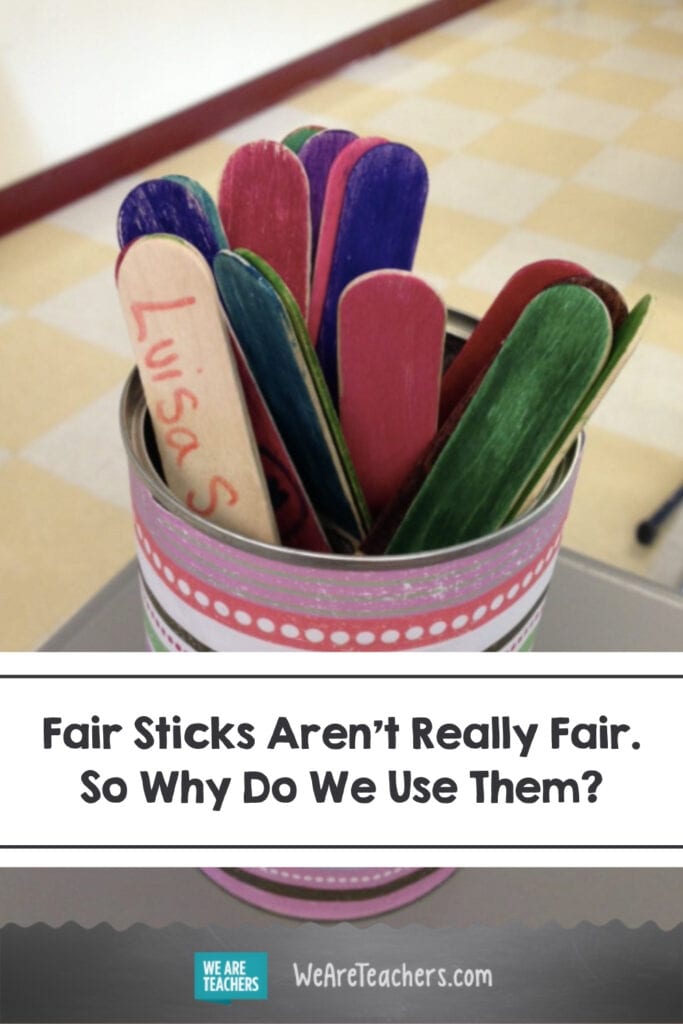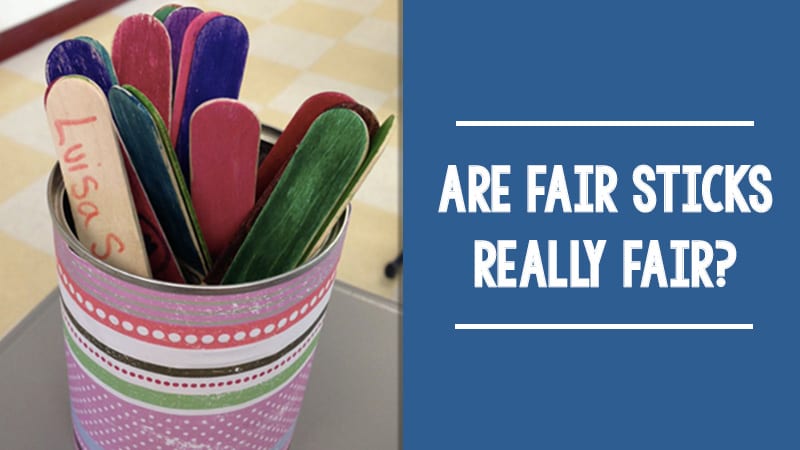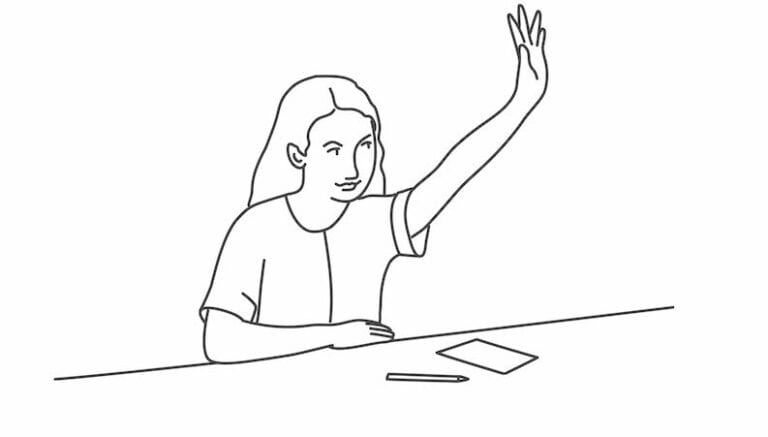“How do I know who to call on?” This was the question that I worried about most in early teaching. So when the more experienced teacher down the hall told me about Fair Sticks, I thought I’d found the perfect solution. Fair Sticks are a set of popsicle sticks with your students’ names. You pull a stick out of a jar instead of asking them to raise their hands. They are the go-to equal participation strategy (there’s even an app!). But when they’re not used thoughtfully, they are anything but fair. Here are some of the common mistakes we make when we use them and some ways we can use them more fairly (or toss them out altogether).
In theory, Fair Sticks help us check our bias. They prevent us from calling on the same students all the time.
On paper, Fair Sticks sound great. The expectation is clear: students need to pay attention because they don’t know if we will draw their stick or when. Some teachers feel that this is good preparation for life. Adults don’t always get to preview questions in advance, and we’re put on the spot all the time. For teachers, we can use Fair Sticks to make sure we call on everyone equally, and we don’t give students who raise their hands first preferential treatment. Many schools require teachers to use Fair Sticks for this reason. But why do we call them Fair Sticks in the first place when their purpose is cold-calling students?
Is anyone else frustrated by so called "equity sticks" ie cold calling students when their name is picked at random. I regard that as an anxiety inducing teaching practice – and there is nothing equitable about it. Why not call them cold calling sticks instead? pic.twitter.com/3PcS8GCFRM
— Jo Boaler (@joboaler) November 2, 2019
In practice, Fair Sticks aren’t always fair. But we can use them more fairly.
Teaching isn’t simple, which is one reason Fair Sticks aren’t always fair. Equal participation is important, but if we don’t pull a student’s name and we run out of time, they don’t get to participate. Also, some questions are harder than others. When we plan lessons, we sequence questions from simple to more complex. So the students’ names we pull first are more likely to answer a yes/no or right/wrong question. You are more likely to get a challenging and open-ended question if your name is pulled later in the lesson. Then there’s the training issue. Teachers are often told to use Fair Sticks, but rarely how and why. We need to be thoughtful in how we use Fair Sticks. Here are some challenges and how we can make using Fair Sticks fairer.
[contextly_auto_sidebar]
Challenge: Personalizing, differentiating, and scaffolding questions is harder. Our questions can’t be one-size-fits-all.
When we use Fair Sticks, we don’t know whose name we will pick. No two students are alike. And just because we teach “fourth grade” doesn’t mean all of our students are magically reading, writing, and doing math at a “fourth grade” level. Not to mention our students have different backgrounds. For some of our students, English isn’t their first language. Another student might have a learning disability. We may have students whose anxiety makes answering questions on demand a barrier to learning. Part of what makes teaching so challenging and so meaningful is that we are always making adjustments to help our students. I’ve watched teachers pull the stick first before selecting what question to ask, but students quickly figured out who was getting the hard or easy questions. When teachers give students the questions the day before, they can’t use that approach. So instead of scaffolding the questions, we need to scaffold the answers.
Solution: We can ask clarifying questions, build on their ideas, and encourage them to “phone a friend.”
If you pull a student’s stick and they don’t know or want to answer, many teachers let them pass. I noticed when this happened in my class, my students shut down or felt like failures. We can coach our students and say things like, “Let me rephrase the question” or “Here’s an example.” We can encourage students to use their notes or reference anchor charts on the classroom walls. We can also encourage students to use strategies like Ask Three Before Me and Phone A Friend to help each other and encourage teamwork.
Challenge: When students know we’re going to cold call them, they’re more focused on whose name is next than the lesson.
I am speaking from my experience here. I found that when I used my Fair Sticks, my students were on the edges of their seats, just wondering whose name I would pull out next. They were much more interested in that than what I was teaching. It was next to impossible for students who always raised their hands first to wait until (or if) I pulled the stick with their name on it. Other students were so worried that they were up next that they shut down entirely.
Solution: Let students know we are using Fair Sticks in advance. If they’re more of a distraction than a tool, we can try something else.
Another suggestion? When you ask yes/no or right/wrong questions, invite students to give a choral response. Pamela, a teacher who shared in the WeAreTeachers HELPLINE Facebook group, suggested giving students a choice. “You can ask them, is it a or b? You could modify the question on the spot or ask them to answer one part of the question.” Another idea: give every student a whiteboard, so they can all answer the question and then hold them up for you to see.
Challenge: Despite our best intentions, students may feel that our fair sticks are more of a “gotcha” than an “I’ve got you.”
If we ask students a question, and they didn’t see it the night before or it’s not on the board where they can easily see it, we are putting them on the spot. Now I’m not saying that holding students accountable isn’t important. But cold calling isn’t effective for all students. I felt terrible when I pulled a student’s name, and they asked to pass or apologized for not knowing what to say. I worried that if I let students pass, I was letting them off the hook, and that wasn’t fair to other students.
Solution: We can give students the questions the night before, write them on the board, and invite them to turn and talk before we pull the Fair Stick.
We love this suggestion from Ruth in our WeAreTeachers HELPLINE Facebook group to let students rehearse first. She says,” I always gave the table participants time to discuss the possible ‘answers’ prior to the spinning and made all students aware that they should be prepared to share. I feel the “rehearsal” time with their group—combined with random selection—provided proper equity.”
Want more articles like this? Be sure to subscribe to our newsletter!
Plus, I Didn’t Allow Hand-Raising In My Class. Here’s Why.


